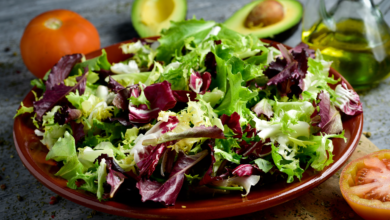Exploring the Evolution of Millinery Through the Ages

The craft of millinery has adorned the human head for centuries, acting as both a functional protection from the elements and a significant marker of cultural identity and social status. From the Beret of Ancient Egypt to the Hennin of the Medieval Courts, and the chic fascinators at contemporary royal weddings, millinery has always been at the forefront of fashion, manifesting the current zeitgeist through its expressive designs. As we take a step back and peer through the veils of time, we unravel the intricate story of how millinery has evolved, reshaped, and persisted, reflecting the metamorphosis of society, culture, and individual expression.
The Ancient Origins of Millinery
The roots of millinery can be traced back to the very dawn of civilization when humans began to fashion materials to protect, honor, and beautify the head. Amongst the earliest forms of headwear, the Fillets of Ancient Greece and the usage of animal skins and vegetation by various indigenous tribes demonstrate the universality and diversity of millinery, with each culture imbuing their headwear with unique ceremonial, religious, and societal meanings.
Early Headwear: More Than a Practicality
In many ancient civilizations, head coverings were as much about function as they were about tradition and social order. In some cultures, the type of headwear one could wear was reserved for particular classes or groups, making it an explicit symbol of one’s place in society. This importance is evident in the ceremonial headdresses of tribal leaders or in the Skull Caps of Jewish tradition.
The Evolution of Headgear Reflects the Times
As societies grew, so did the complexity and meaning of headwear. We see this in the elaborate headpieces of the Pharaohs and their significance in funerary practices, as well as in the protective iron helmets of Roman legionaries. The craftsmanship and materials were often limited by the resources available, with feathers, furs, and expensive dyes signifying wealth and power.
Evolution of Millinery in the Middle Ages
In the Middle Ages, millinery reached new heights of splendor. With the rise of organized religion and feudalism, headwear assumed intricate religious and social significance. From the simple Coifs of common folk to the towering Hennins of noblewomen, the headwear of the Middle Ages is a veritable storm of color and form.
Holy and Otherworldly Headwear
The iconography and liturgical calendar played a major role in the designs of millinery during this period. Ecclesiastical hats, such as the Mitre and the Biretta, were richly embroidered and began to symbolize the divine power of church leaders. Meanwhile, folklore and superstition influenced the pointing hat, associating it with witches and wise women.
A Social Ladder of Hats
The Middle Ages saw the rise of sumptuary laws that regulated what people could wear based on their social and economic status. This, in turn, gave rise to the development of extremely detailed and diverse hats, such as the chaperon with its long tippet, a precursor to the modern hood. The wealth and status of an individual could be ascertained by the complexity and cost of their headwear.
Millinery in the Modern Era
The Industrial Revolution brought about significant changes in the production and accessibility of hats. Mass production techniques led to a wider availability of hats, and the shrinking importance of hats in daily life gave rise to caps and other more functional headgear designed to be worn by both men and women.
Fashion, Function, and Frivolity
The industrial age saw the proliferation of new styles and materials. Straw, silk, and felt hats became staples of formal and daily-wear, and the adoption of military-style caps and helmets for civilian use blurred the lines between practical and fashionable headwear. However, even as hats became less practical, they were still an essential part of etiquette and social standards.
Millinery as a Marker of Gender and Power
During this time, millinery became a critical component of Western fashion, with women’s hats transitioning from modest bonnets to extravagant designs. The iconic picture hats and ornate Victorian headpieces were a testament to the elaborate societal rituals and notions of feminine decorum.
Innovations in Millinery Today
The contemporary millinery scene is one of continued innovation and adaptation. With technological advancements, designers are pushing the boundaries of what is possible, creating stunning pieces that marry traditional craft with modern sensibilities. In the wake of sustainable fashion movements, milliners are also exploring eco-friendly materials and processes to ensure the craft’s longevity.
High-Tech Headgear
The advent of 3D printing and digital design has allowed milliners to conceptualize and create avant-garde headwear that would have been inconceivable even a century ago. These cutting-edge designs are often seen on fashion runways and in the pages of luxurious magazines, highlighting the skill and creativity of modern milliners.
Traditional Techniques in the Modern World
Despite the allure of new technologies, there is a growing appreciation for traditional millinery methods. Hand-blocked hats, intricate hand-stitching, and ancient felting techniques are experiencing a renaissance as consumers seek out authentic craftsmanship and bespoke items. The melding of old and new is seeing traditional methods being used to create contemporary designs, bridging the gap between generations of hat-wearers.
The Continuing Legacy of Millinery
The craft of millinery has endured the test of time, continuing to play an essential role in fashion, film, and everyday life. Despite the headwear no longer being a mandatory part of one’s wardrobe, it perseveres as an expressive and cultural garment, with milliners often the unsung heroes of the fashion world, contributing to the magic of theatrical productions and red carpet events.
The Enduring Fascination with Hats
Hats have seen a resurgence in recent years, with fashionistas and influencers using them to make bold statements and complete their looks. From the elegance of a wide-brimmed sun hat to the whimsy of a fascinator, the versatility of headwear ensures that there is a perfect hat for every occasion and outfit.
Looking to the Future: Sustainable and Inclusive Millinery
Sustainable fashion practices are influencing the millinery industry, with designers experimenting with organic materials, repurposed fabrics, and ethical production methods. Milliners are also embracing diversity, creating headwear to suit all ages, races, and genders, ensuring that the art of millinery continues to be a reflection of our interconnected and varied society.
Conclusion
The history of millinery is a testament to the enduring nature of human creativity and our innate desire for self-expression. From the meager beginnings of primitive head coverings to the opulent designs of the Victorian era and the cutting-edge creations of today, millinery has been a chameleon reflecting the values and aesthetics of each era. As we continue to evolve, the art of millinery will undoubtedly keep pace, inspiring us with its ingenuity and reminding us that the hat we choose to wear is not just a fashion statement, but a window into a rich and storied past.



